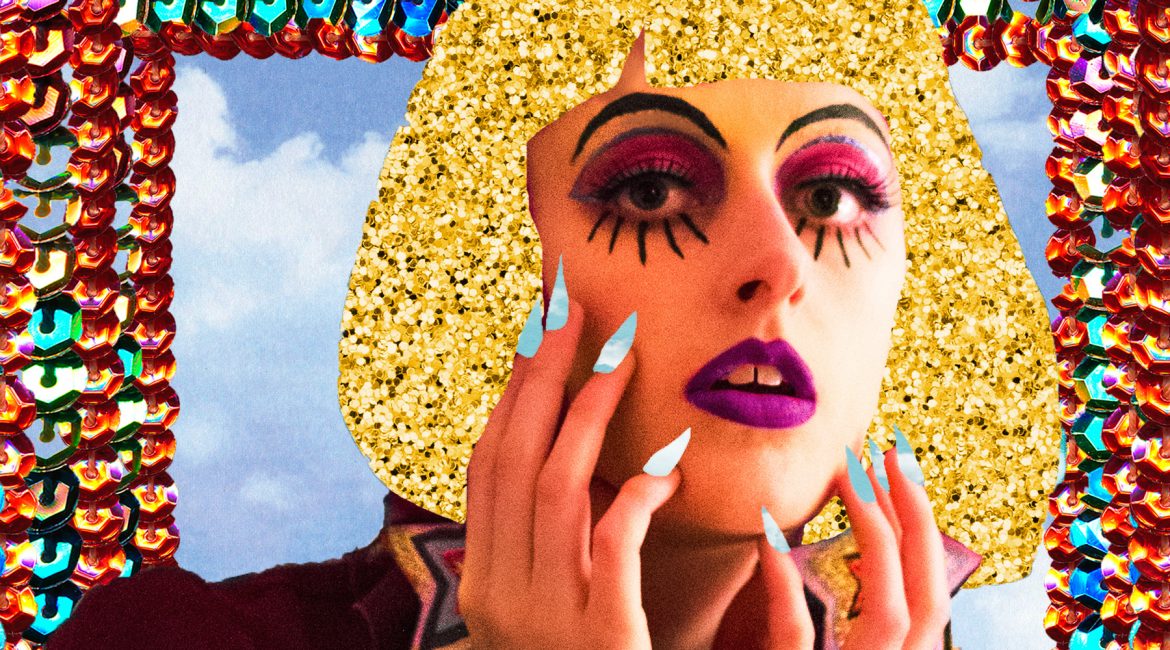Savana Ogburn’s photography and multi-media art is as striking as it is fun. Largely based in photography, Ogburn utilizes other techniques such as collage to build surreal and magical worlds around her subjects. Discovered on Instagram by Tavi Gevinson of Rookie, this college student is quickly building a career, having since shot for other publications such as Nylon Japan and Refinery29. I chat with her below to find out more about her art, process, and inspirations.
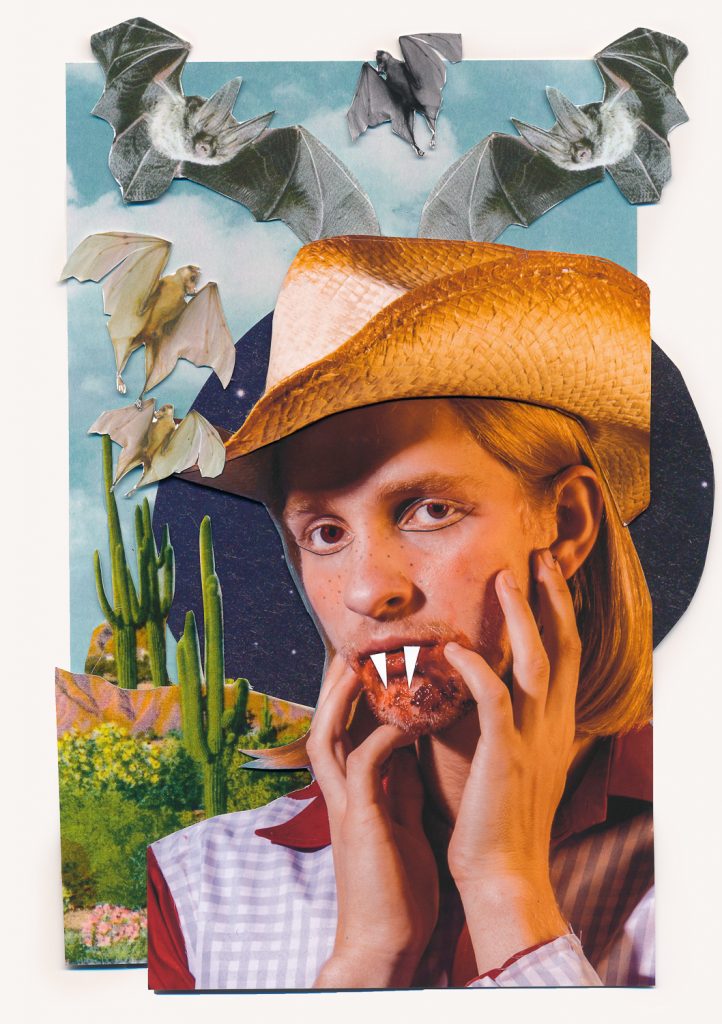 Model: Graham Bohling
Model: Graham Bohling
Could you tell us a little bit about yourself and your work?
Sure! My name is Savana Ogburn, I’m 20 years old and I’m a photographer, collage artist, and set designer based in Atlanta, Georgia. I’ve always loved being creative and tend to obsessively customize things, which has led to me making art in any way possible (which is why I list so many mediums). I have a hard time categorizing my work, but I tend to float between the fashion and fine art worlds and really love collaging and painting my photographs because I’m obsessed with everything handmade, and I’m typically the happiest when I’m making work centered around queerness, identity, and humor.
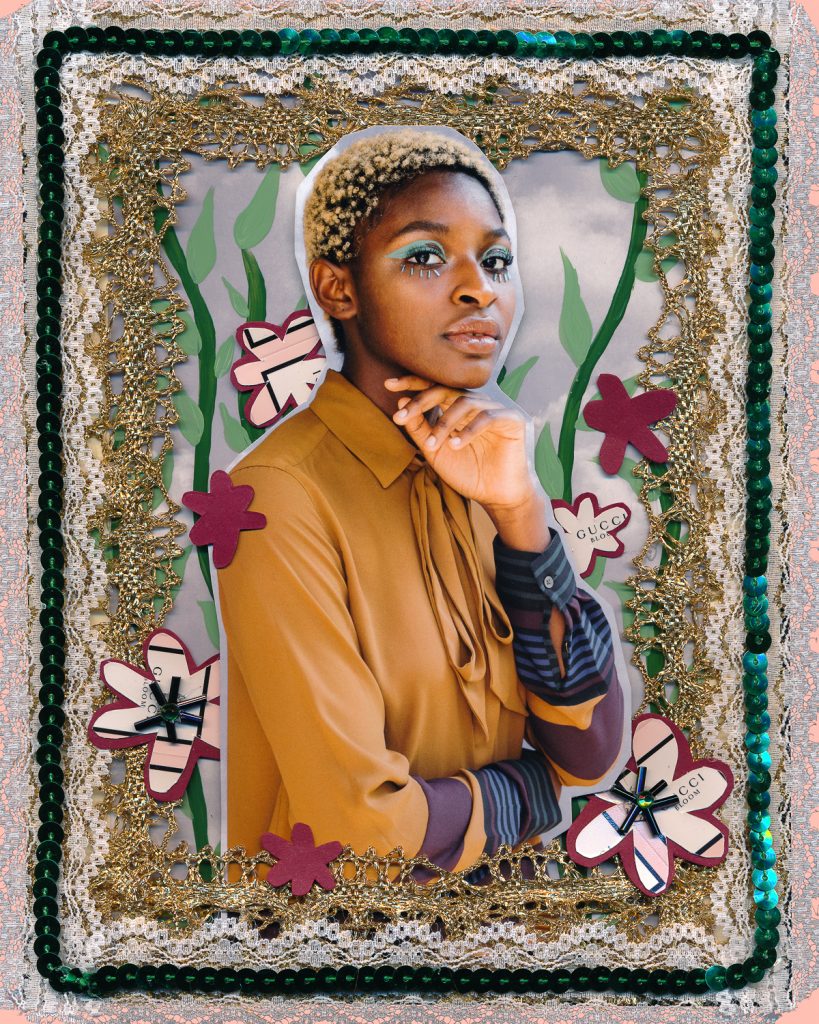 Model: Rokhaya Sylla, MUA: Armando Maldonado
Model: Rokhaya Sylla, MUA: Armando Maldonado
How did you begin taking photos and developing your point of view as a photographer?
I started taking pictures when I was 12 or 13 — I saw a bunch of cool older girls on Facebook with photo albums (they were always titled like, “photography:)”) full of heavily edited images of everyday stuff — their pets, yards, etc — and I thought it was SO COOL. I started taking pictures that looked like those, and my style evolved as I kept playing around with the camera. I shot pictures of my friends, or myself. I was into live music photography for a while because I loved going to shows, and then eventually started playing with this mix of fashion/fine art-esque stuff that I have going on now. I still don’t feel like my point of view or style is totally developed! I’m often not totally happy with what I make, which is good. I want to keep chugging along for a long time.
How did you begin to incorporate collage into your photography?
I used collage the first time super intentionally when I started working with Rookie Mag in 2015. I had pitched a shoot about UFOs with a weird technique in mind (I was going to hold up little toy flying saucers in front of the camera) but had to switch it up last minute and ended up using collage as a plan B. I loved the way it looked and kept experimenting with it in in my work. As far as inspiration goes, I had seen other photographers on Rookie use it — a set by Eleanor Hardwick and Ben Giles is one of my favorites ever ever ever and I think that’s what planted the idea in my mind that a picture doesn’t have to just be a picture.
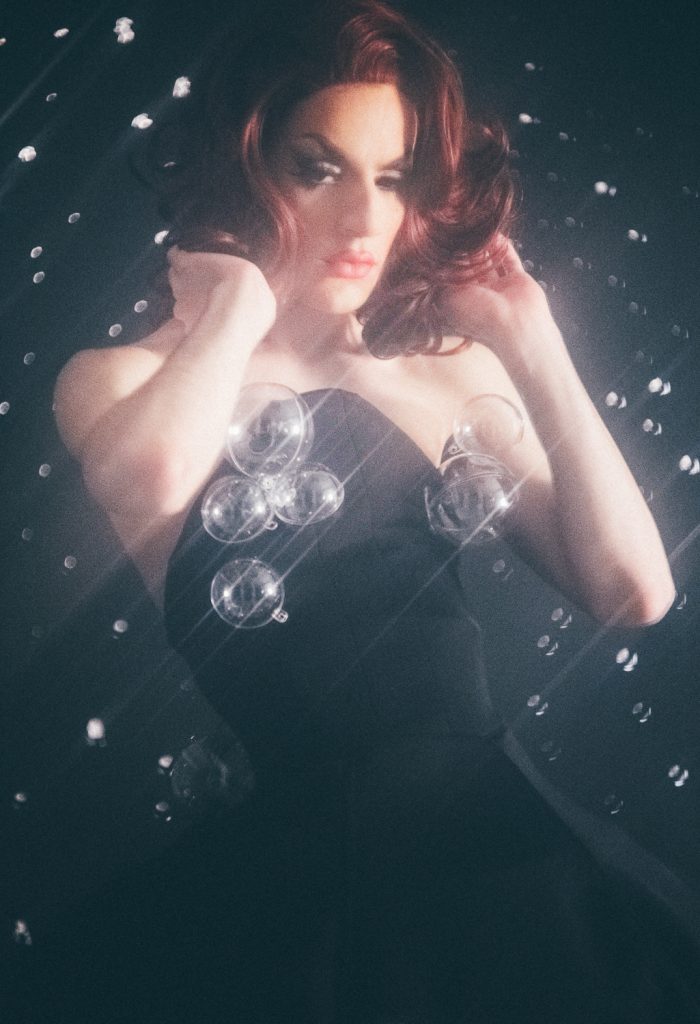 Scarlett Rey
Scarlett Rey
A large majority of your work uses bright, often contrasting colors, but some has featured much more muted color, most notably your series Dreamscape, which mostly features more washed out, monotone blues. How do you choose your color palettes?
I rarely tone it down, honestly. The Dreamscape set is a real anomaly — I did that shoot with a couple of friends and we were just sort of messing around. When I pulled out the angel wings it started to really soften the hair/beauty look, so I felt that a more pastel palette suited the images better and that’s what I ended up using. I don’t think anything brighter would have been appropriate for those. I have a really strong inclination to use bright colors. I really love art that’s visually abrasive and kind of hits you in the face, and that’s what I want my work to do most of the time.
You utilize both digital and analog photography. How do you choose when to use one over the other and how do the differences in each affect the visual worlds you create?
I mostly use film to document my life. I try to keep my 35mm film camera on me when I go out so that I can document friends, family, and things that catch my eye. I’ll occasionally use film for a shoot, but I really do enjoy the predictability of digital, especially for paid work and things that are higher stakes. Film tends to really soften things, and I’m gonna sound like an asshole, but it really is so rich and nostalgic! I’ve been taking a large format photography class since January and I’m so in love with the detail that you can capture with those cameras, and how intentional you have to be when you’re shooting film. I feel like it makes my work better when I know I’m going to have to put in work/time/money to even see the picture.
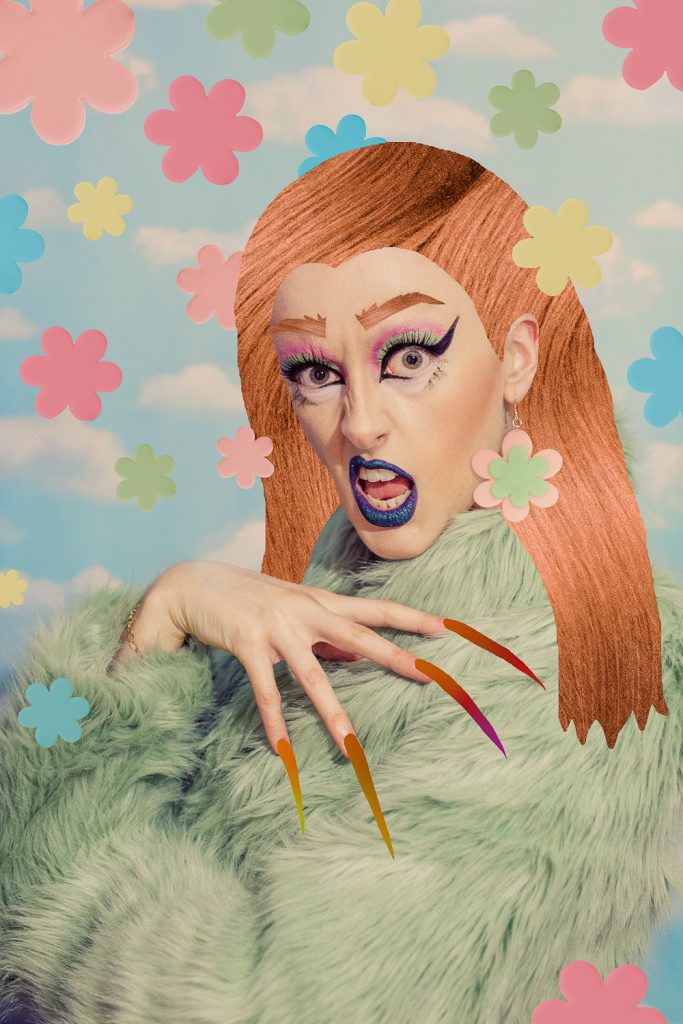 Identity Crisis
Identity Crisis
How has social media and the digital space at large affected your work and career? How and why do you choose to utilize techniques in your work which can only exist digitally (such as gifs)?
Social media has literally given me a career and I’d be dumb to say it didn’t. When Rookie approached me about contributing (Tavi found me through Instagram), I didn’t realize how many doors that would open. Through having work on their site and social media, I had a lot of new eyes on my work which luckily led to more opportunities. Instagram has helped me grow my audience so much which is great but also terrifying when you think about how fast technology and attention spans move. It’s also given me the opportunity to con a lot of creative people that I admire into being my friends, which is honestly half of what keeps me using it. Being able to chat with people in similar positions and mindsets as me has kept me 1. sane and 2. aware of what’s normal and what isn’t in the industry.
As for the second part of your question, that’s something I’ve been thinking about a lot lately! I’ve been doing a lot more handmade collages in the past few months (as opposed to making them digitally in Photoshop) because I love being able to actually touch my work. When I do utilize digital techniques like gifs and digital collaging, it’s most likely because it’s an effect that I *can’t* create with my hands, or it’s cheaper, etc. So the short answer is: I use them because I can. But I like working with my actual hands much more.
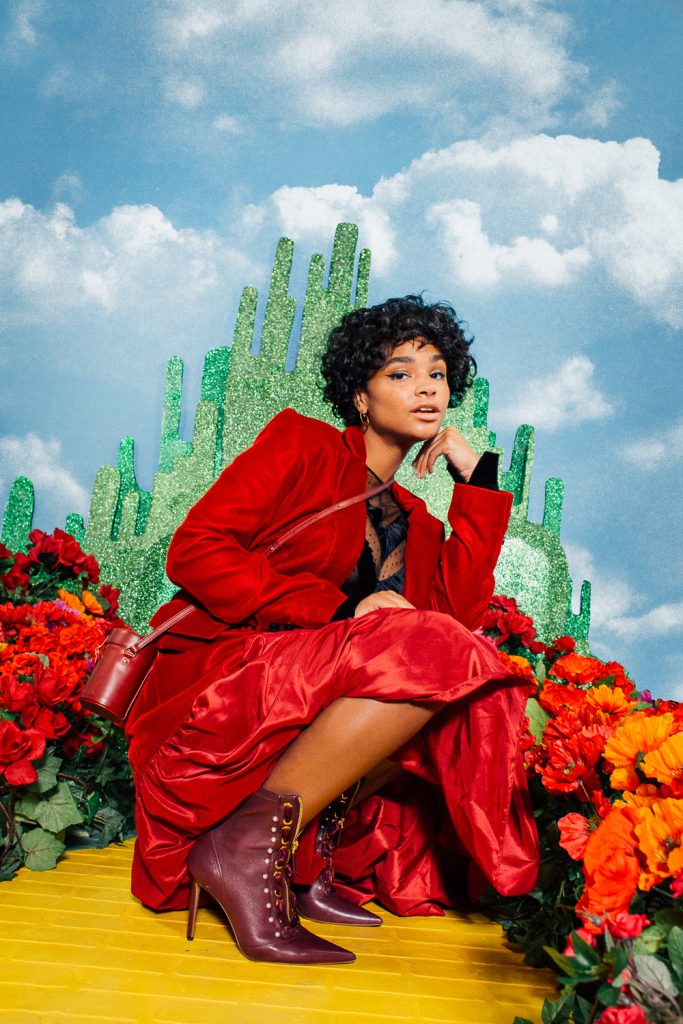 Model: Aiyana Lewis, MUA: Zoe Simone, Hair: Ebonee Tabb, Stylist: Emily Holland
Model: Aiyana Lewis, MUA: Zoe Simone, Hair: Ebonee Tabb, Stylist: Emily Holland
Could you speak a little about what Sonic Blume is, the impetus behind creating it, and any plans for its future?
Sonic Blume was an online music publication that was meant to make music media — and the experience of working in it — a little more accessible and fun. I created it because I was trying all of these new techniques, like collaging and gifs, on my live music work and couldn’t seem to find a publication to share them through. Most music media can feel really sterile, or at least did when I started Sonic Blume, so I felt that it was a niche that needed to be filled. It was super fun to run. We had I think like 20-30 contributors around the world who made some really great content for the site, but it was very challenging being the only person scheduling posts and coordinating content. I did it all myself. I did one print run and ended up breaking even, which is good, but I also hated not being able to pay contributors. So as I got busy with school and personal work, I just ended up tapering off the posts. It’s still up as an archive, as I still want all of our contributors’ work to live on, but there are no plans to pick it up again.
Music seems to be very important to your work and your concert photography especially is a large indicator of that. The ways you edit those photos seem to bring the sound to life! How does music affect your work and process? Has it always been an important part of your life and art?
Music has always been a really important part of my life. I feel like periods of my life are marked by what bands I obsessed over at the time. I went to a lot of shows as a young teenager and eventually started taking my camera and documenting the artists that inspired me which made for a really fulfilling cycle of inspiration. I still feel that way today, even though I don’t go to as many shows anymore.
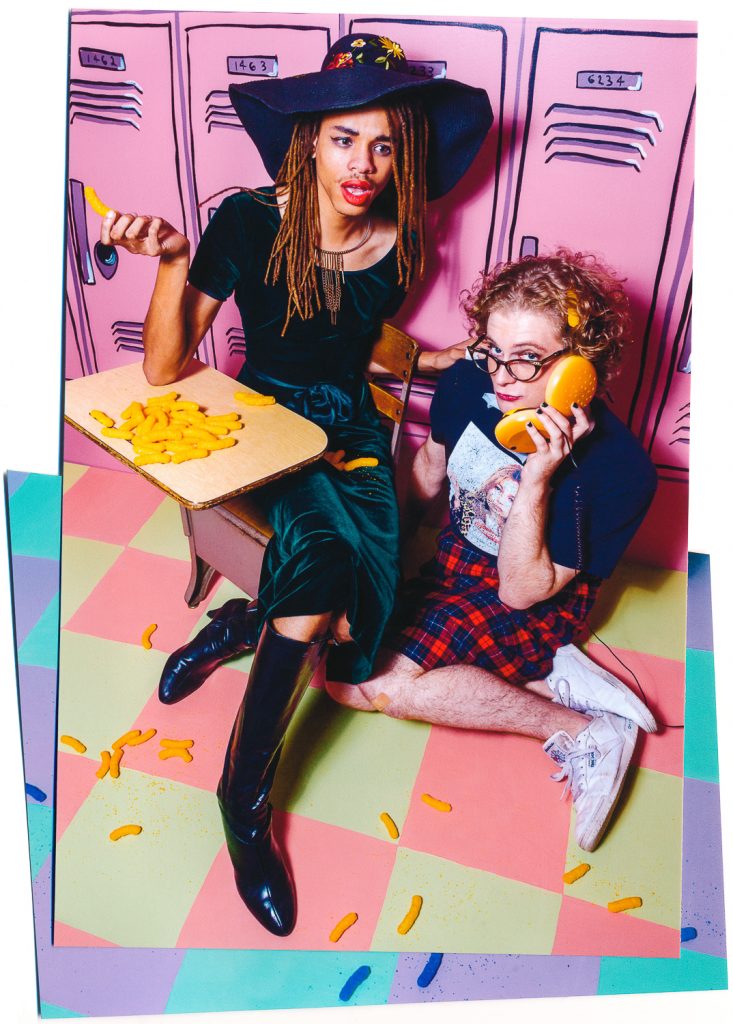 Models: Monte Quarlo and Ryder McEntyre
Models: Monte Quarlo and Ryder McEntyre
Do you have any future plans you’d like to share with us?
I’m really just using this year to figure out the kind of work I really want to make right now. I’m playing with more handmade elements, thinking out concepts more, and exploring more ways to put my work out there (other than just Instagram, haha). My plan for the foreseeable future is just to make stuff! That’s it.
Follow Savana Ogburn on Instagram.
Join the Posture community and become an official member! Membership includes our special annual print edition ($20 value), free and/or discounted entry to all Posture events in NYC (including upcoming mixers, panel discussions, and networking opportunities), special offers from our partners, personal updates from the Posture team, and more. Learn more here.

